Whew! We've been traveling some and I'm a little slow in getting this week's blog posted. Lots of things happening and I'll give some updates in the coming weeks. In the meantime, I thought I'd share some insights into a little of what keeps us busy each week... some background as to the types of information we often supply from our archives.
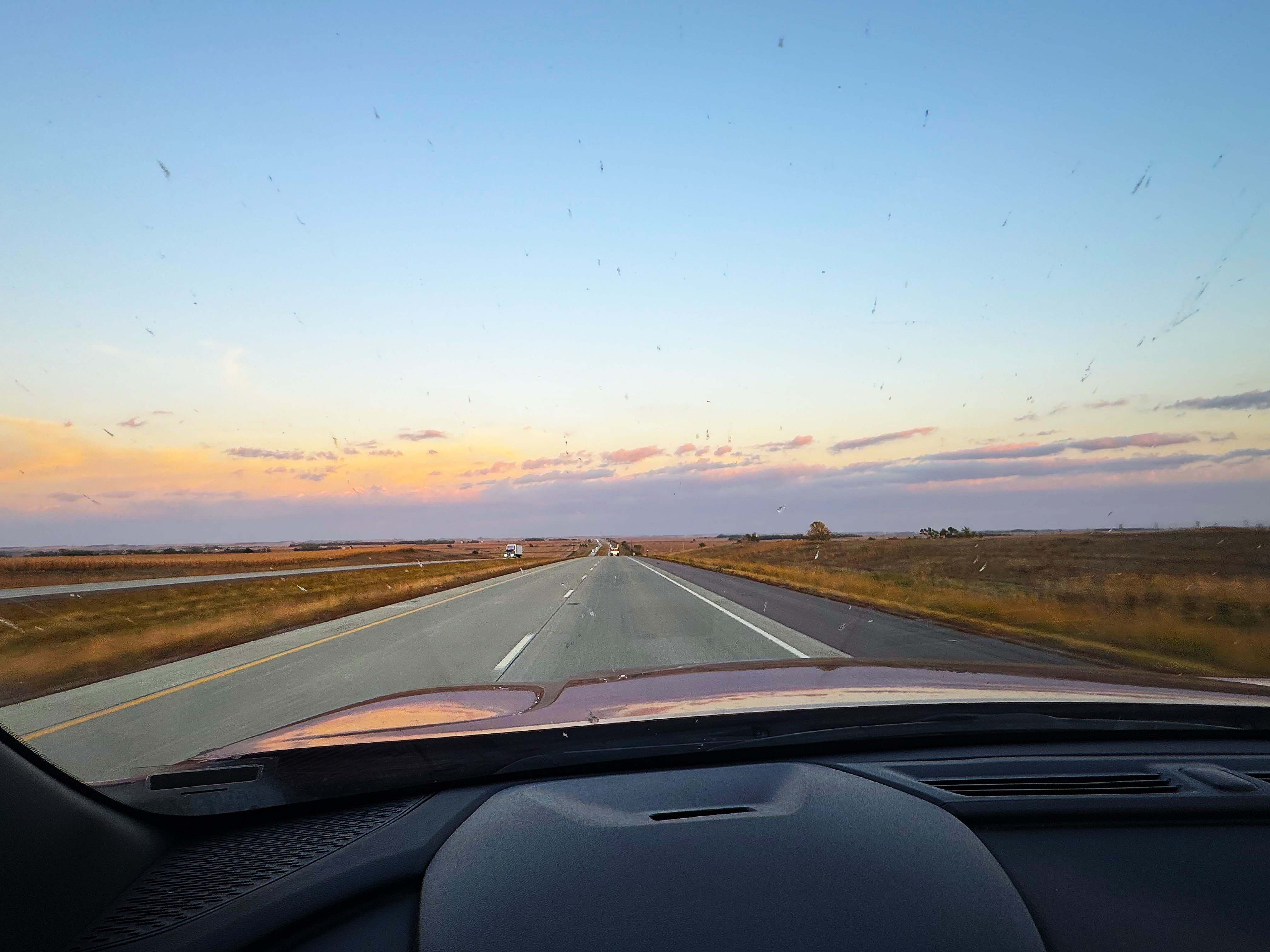
Like most folks, every week around here will vary in terms of projects, directions, and plans. What doesn't typically change are the kinds of questions we receive. There's a good reason for that. When it comes to accurate, period information on early wagons, stages, and western vehicles, it can be a bit of a jungle navigating available resources. First of all, there's no such thing as a one-stop-shop with ready-made answers to every possible question. Secondly, if a person is focused on authenticity or originality, the internet is a lot like the Wild West - you never know what may come next and there is a ton of incorrect information presented as fact. The primary source details that can be found on the web are extremely limited and may not present a complete picture of a particular brand. Plus, with the recent introduction of A-I produced imagery, it can be even more challenging to know what's real. Thankfully, our acquisition of original literature, photos, ledgers, and other data began decades ago when more of these materials could be found. As a result of these search and rescue efforts, our archives and experiences have become significant resources for writers, educators, collectors, businesses, museums, historical societies, and even government entities.
With that as a bit of background, just what kinds of queries fill our Inbox? While it's hard to list every request we get, below are a dozen points covering some general categories of questions we're asked...
Information relating to the correct color, striping, stenciling, or logos on a wagon from a certain timeframe...
Many survivors have no paint remaining or have been repainted multiple times, making it difficult to know the correct look of a vehicle from a certain era. Equally challenging, most prominent brands will have design elements that evolved over the years. Getting it right involves knowing what was done when and by whom.
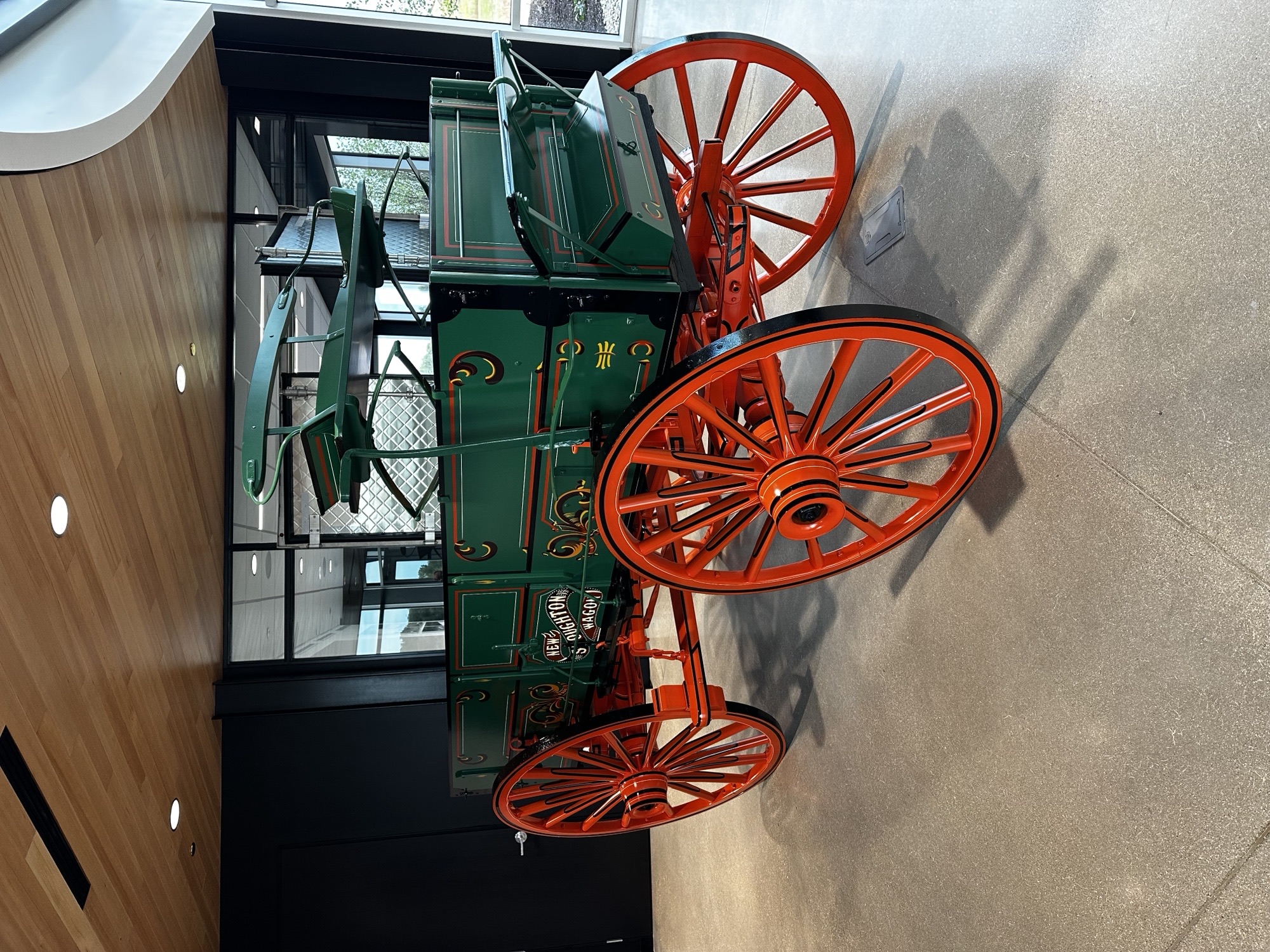
We were pleased to assist Hansen Wheel & Wagon Shop as well as the Stoughton Trailer Company with details on this rare, 1890s restoration.
Individual vehicle features...
Understanding the 'who, why, and when' of a feature can be a crucial part of brand confirmations as well as understanding part functions, nomenclature, and dates of manufacture.
Identifying the maker of an otherwise anonymous wagon...
This may be the most common question we receive and it's understandable. In the world of collectible vehicles, IDENTITY IS EVERYTHING! Background histories and identities are where the stories start and where we draw values from. Likewise, this is an area where I've seen well-meaning but wrong names attached to a wagon. If a brand cannot be confirmed with primary source material it should always be a bit suspect. Too many times, I've had to share corrective information; one circumstance involved a gentleman who had repainted a wagon believing it to be a Weber built in Chicago, Illinois. Instead, it was a Winona made in Winona, Minnesota. There are a number of significant design differences between the two. Similarly, the box and other parts can be from different makers than the running gear (undercarriage). Knowing with absolute assurance that you understand exactly what you're looking at can make all the difference in the pride of ownership.
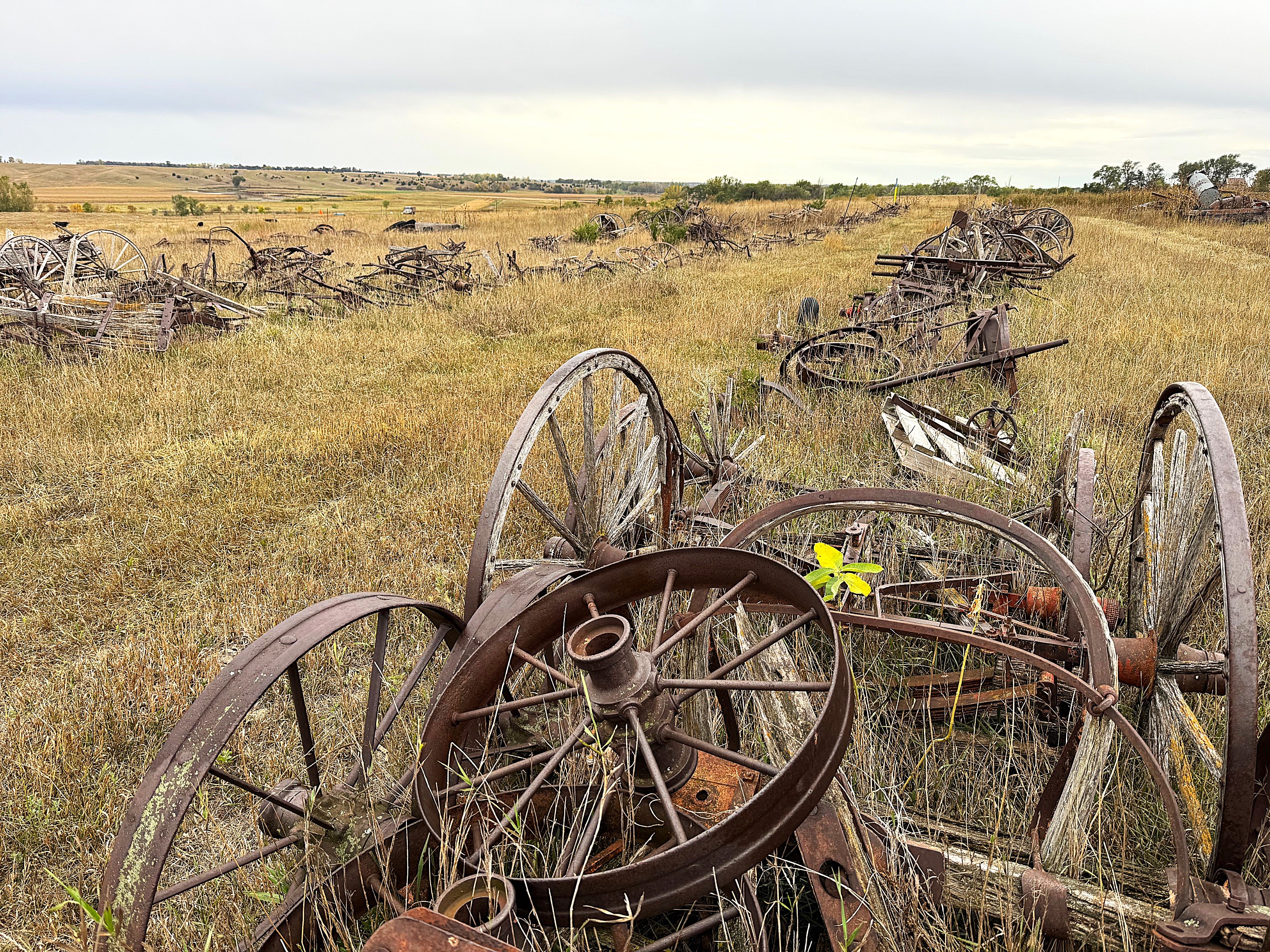
Wagon 'bone-yards' like this one at Hansen Wheel & Wagon Shop in Letcher, South Dakota can hold a wealth of information as to who did what, how, and when. Image Copyright © David E. Sneed, All Rights Reserved
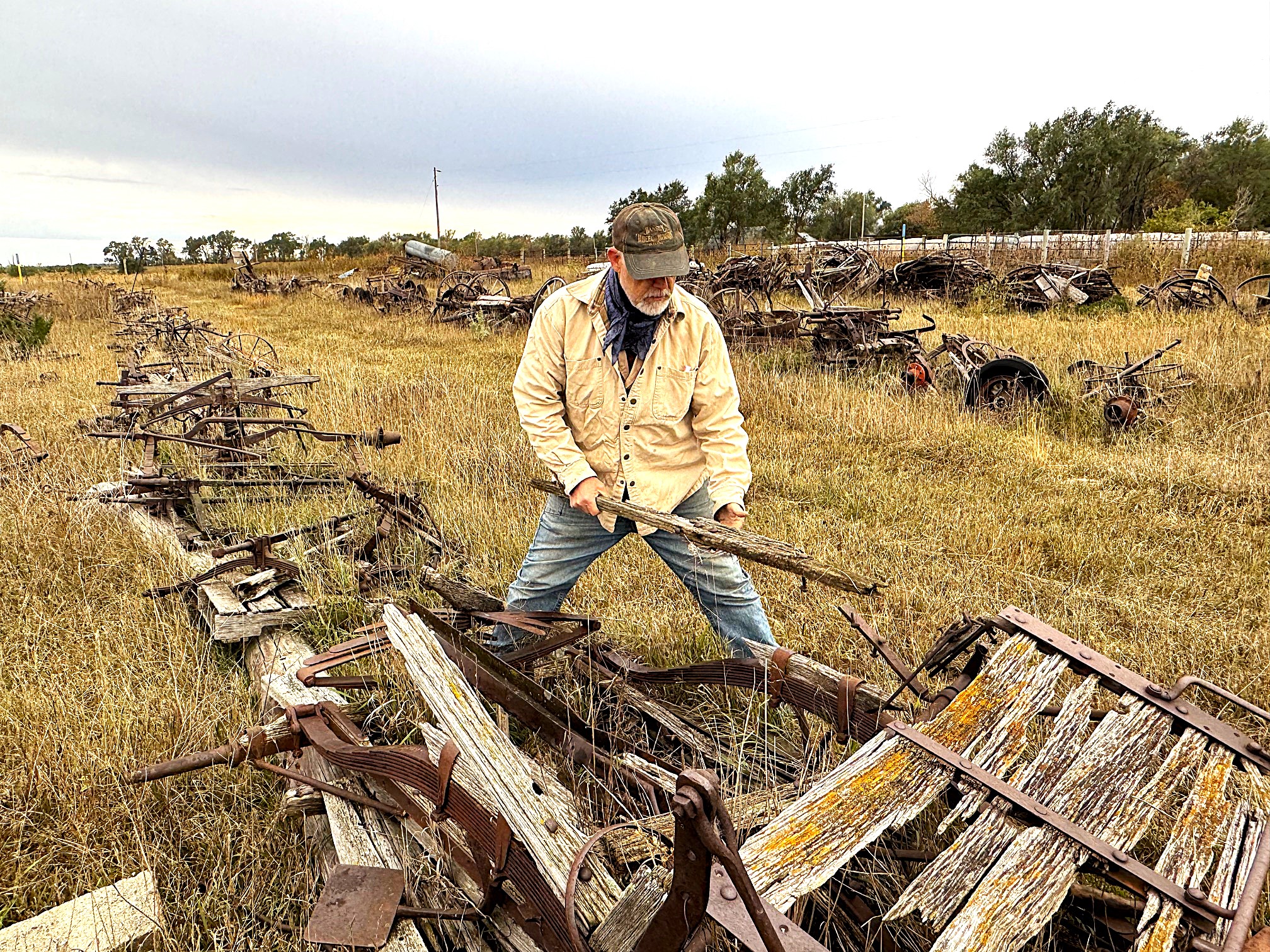
Stagecoach questions...
Our collection of early stagecoach images, maker literature, and research has been used by museums, historical societies, and private collectors looking for additional background on their vehicle or details needed for conservation and restoration work. Our files include hundreds of period images related to Concord coaches, mud wagons, and other stages.
Did they or didn't they...
This category of questions is also among the more frequent we receive. Folks often see unfamiliar elements and wonder if this was 'right' or 'normal' for a particular wagon brand, era, or style of vehicle. These can be some great questions. Our research and documentation often covers even the smallest hardware, woodwork, and maker details.
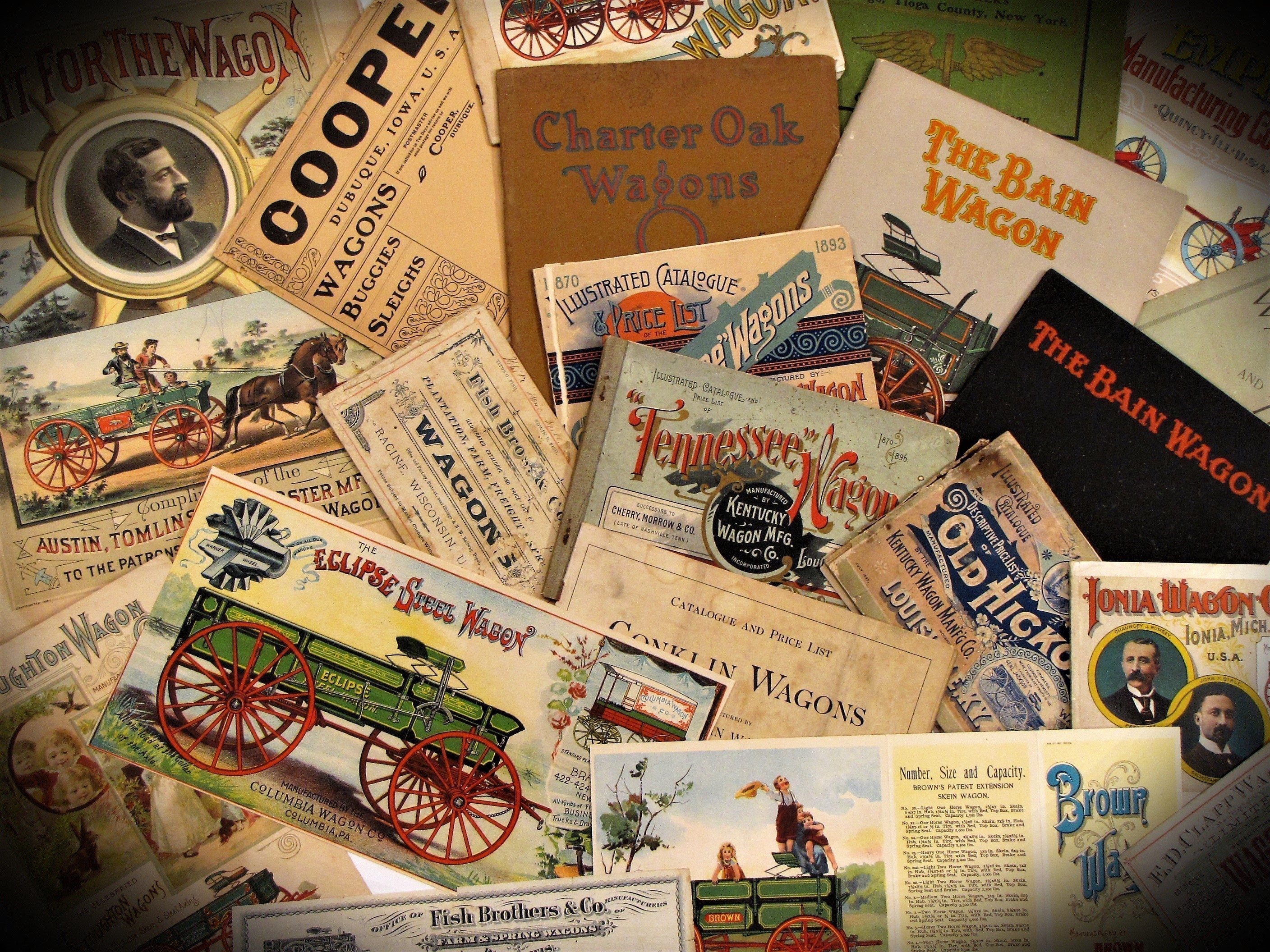
Manufacturing dates...
Questions involving when a wagon or western vehicle was made are also very common. After all, this information can tell us even more about the story of a vehicle. Some of the toughest moments to encounter are those where the vehicle has been assumed to be of an age that it is not.
Some time ago, I had the unfortunate duty of explaining to a group that the '1830s' wagon they thought they had was instead a provable twentieth-century piece. How do we know this? In this case, there were multiple ways. First, I was able to identify the maker through highly identifiable construction and design traits. We also identify time periods of manufacture through evolutionary and patented features on wagons. In other words, certain timeframes have different design elements. I often cover many of these details in our lengthier, symposium-style presentations.
Collectability/desirability of a particular wagon...
I can't stress the following points enough... if you're looking at purchasing a wagon and don't thoroughly KNOW what you're looking at, please understand that it's easy to miss crucial points. Time and again, I've seen vehicles purchased that were either not what they were represented to be or had problems that were not easy to spot. Those oversights, misunderstandings, and neglected knowledge can impact your satisfaction and pocketbook. I've seen too many problems and inconsistencies totally ignored at public auctions, private sales, and even museum displays! Ultimately, it's important to KNOW what you're getting. After all, you will be the one to live with the decision. While a seller may have good intentions, a private evaluation can go the extra mile by providing you the power to better understand the vehicle and then negotiate with greater confidence.
Is the price appropriate for the vehicle?
Whether a person is collecting or just wanting to avoid getting upside down with the price on a purchase, most everyone wants to feel they weren't taken advantage of during a purchase. Private consults with another authority, apart from the seller, can be helpful in alleviating these concerns. We're pleased to review and evaluate antique vehicles for folks throughout the country.
Chuck wagons, Sheep wagons, Army wagons, and other function-specific vehicles...
Custom wagon and even government-specified vehicles can be unique enough that certain details may be difficult to come by. Our archives contain specific, hard-to-find information as well as supporting period photos and other data.
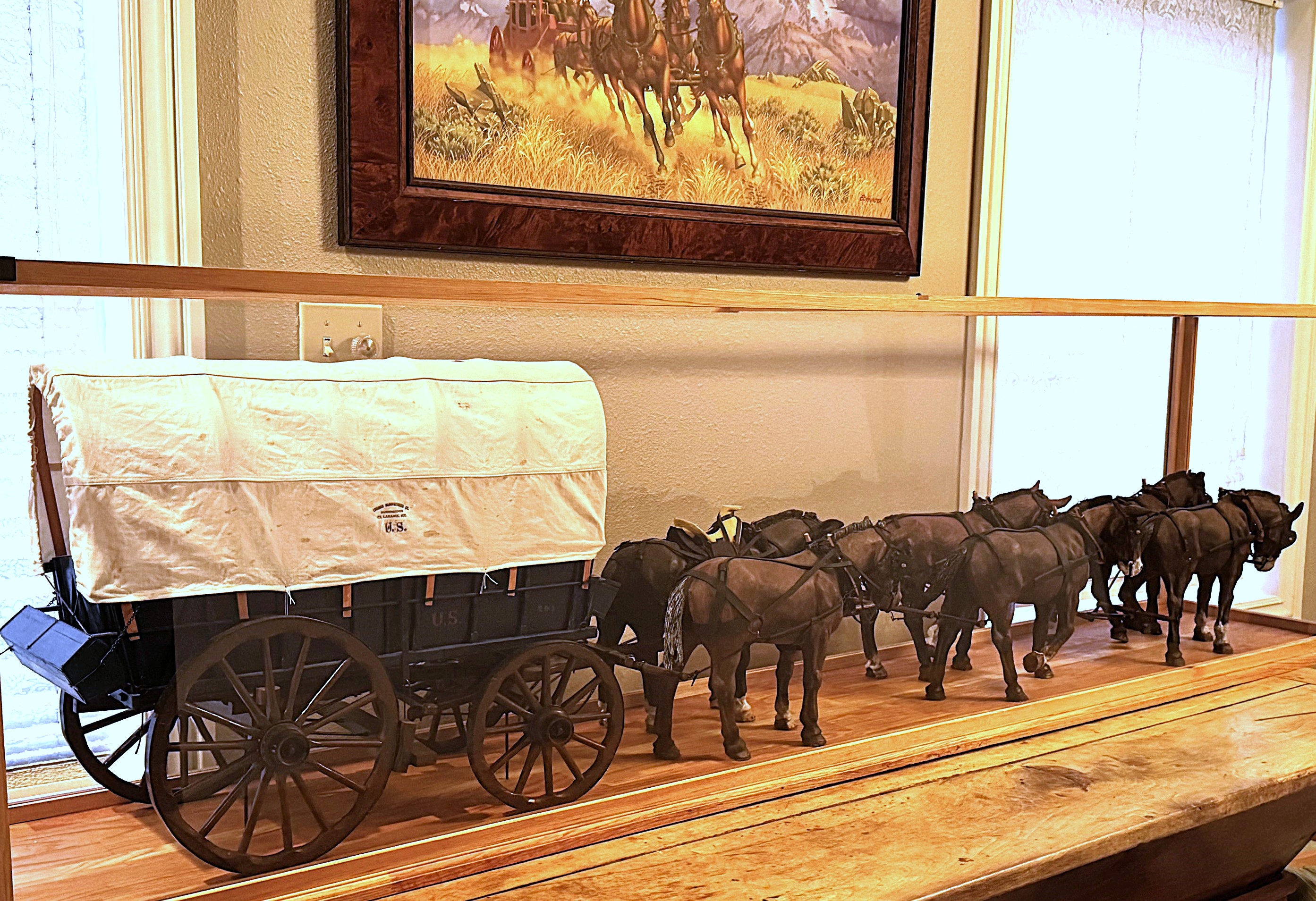
This m1878 six-mule army wagon is a one-of-one scale model created by Thomas Lindmier. Tom literally wrote the book on U.S. military wagons - "The Great Blue Army Wagon". Image Copyright © David E. Sneed, All Rights Reserved
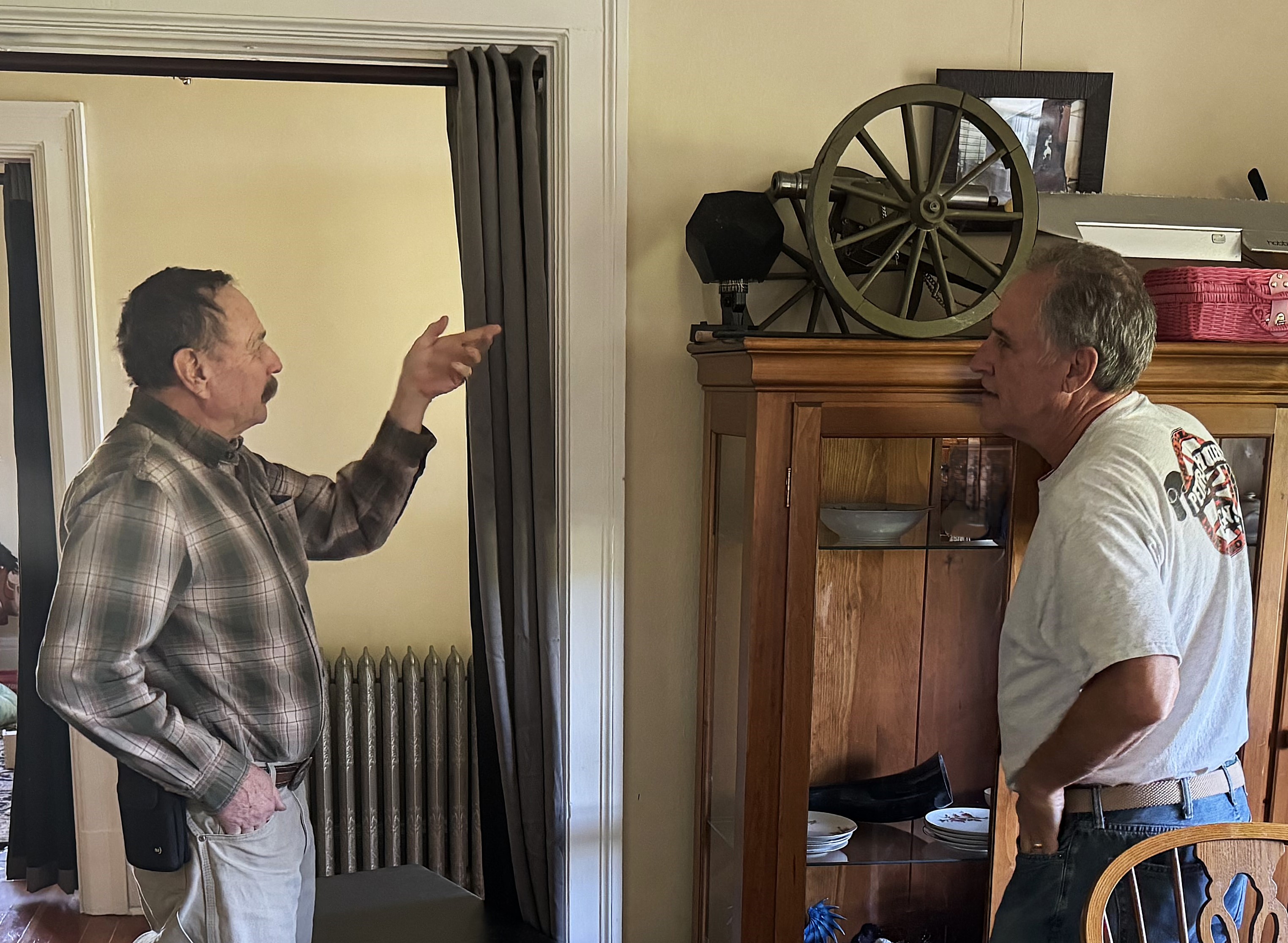
Recognizing patent details, design origins, part names and functions, and similar elements...
Getting backgrounds right often requires a solid knowledge of the mechanics of early vehicles as well as the industry and how competition evolved. Understanding when designs changed and different features were introduced, what constituted a particular brand during a specific era, and how to determine whether the whole is original or perhaps a collage of random parts is just part of what it takes to better assess a set of wheels.
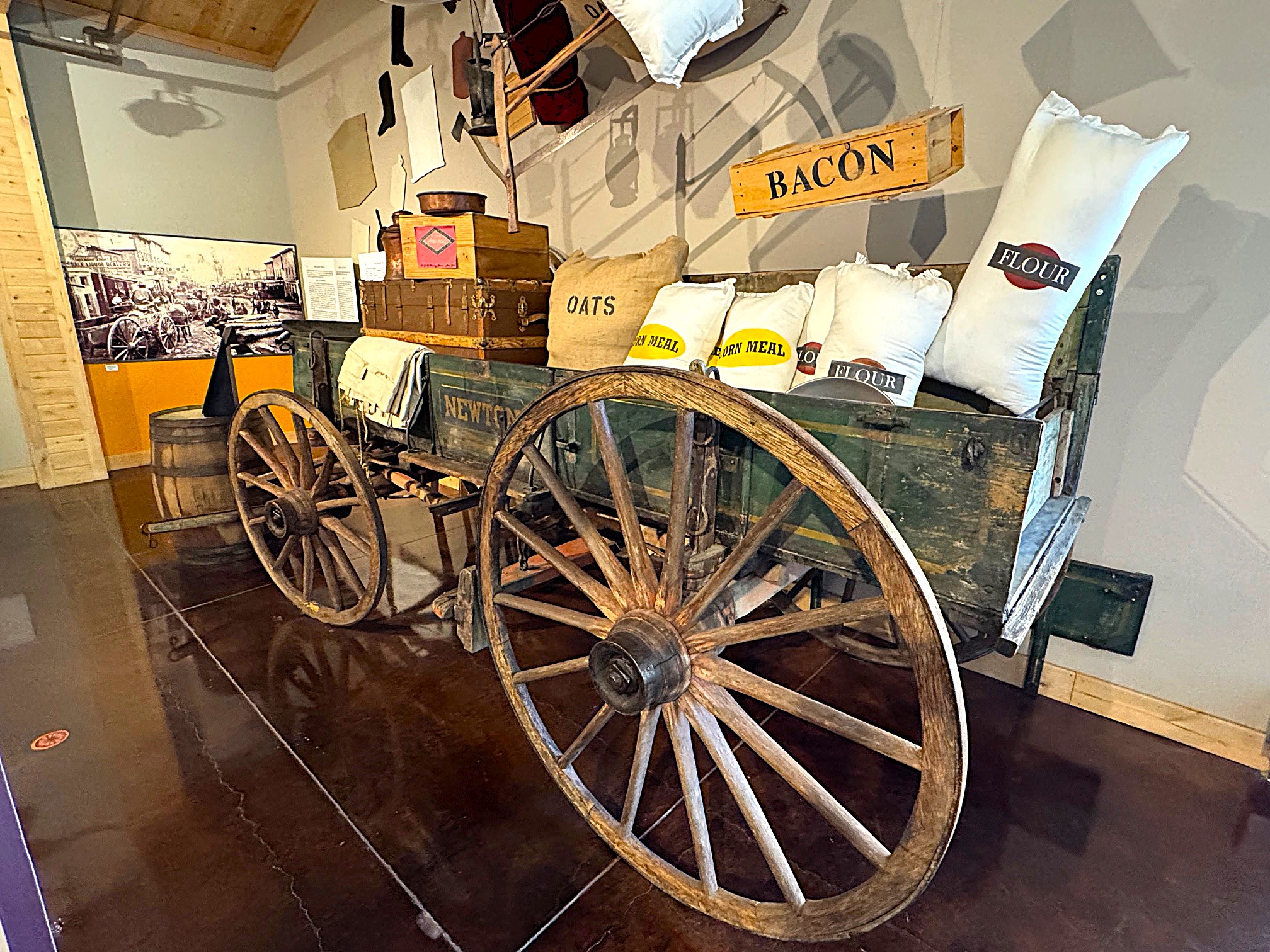
This impressive wagon is actually comprised of two different brands. While not necessarily a negative feature, it's important to be aware of originality levels when evaluating vehicles. Image Copyright © David E. Sneed, All Rights Reserved
Have you ever seen this?
These types of queries are common as folks look for added insights into vehicle features, designs, and even originality or authenticity. First of all, kudos to those noticing these details. That extra attention is the first step to truly learning about these pieces. I never tire of examining old wagons and stages.Why? Because there's always more to learn and, with tens of thousands of makers in the U.S., there's a minimum of two hundred years and millions of ways of doing things. In short, we'll never stop seeing something new... IF we're looking closely at a sufficient number of rigs.
Availability for presentations, speaking engagements, demonstrations, and similar activities...
I've had the privilege and pleasure of giving early vehicle presentations all over America.They range from casual to extremely formal and include a world of information not found anywhere else. Whether a group or event is looking for a light-hearted look at America's wood-wheeled history or a more scientific and scholarly approach, we have the background and original resources to bring this crucial part of the Old West to life!
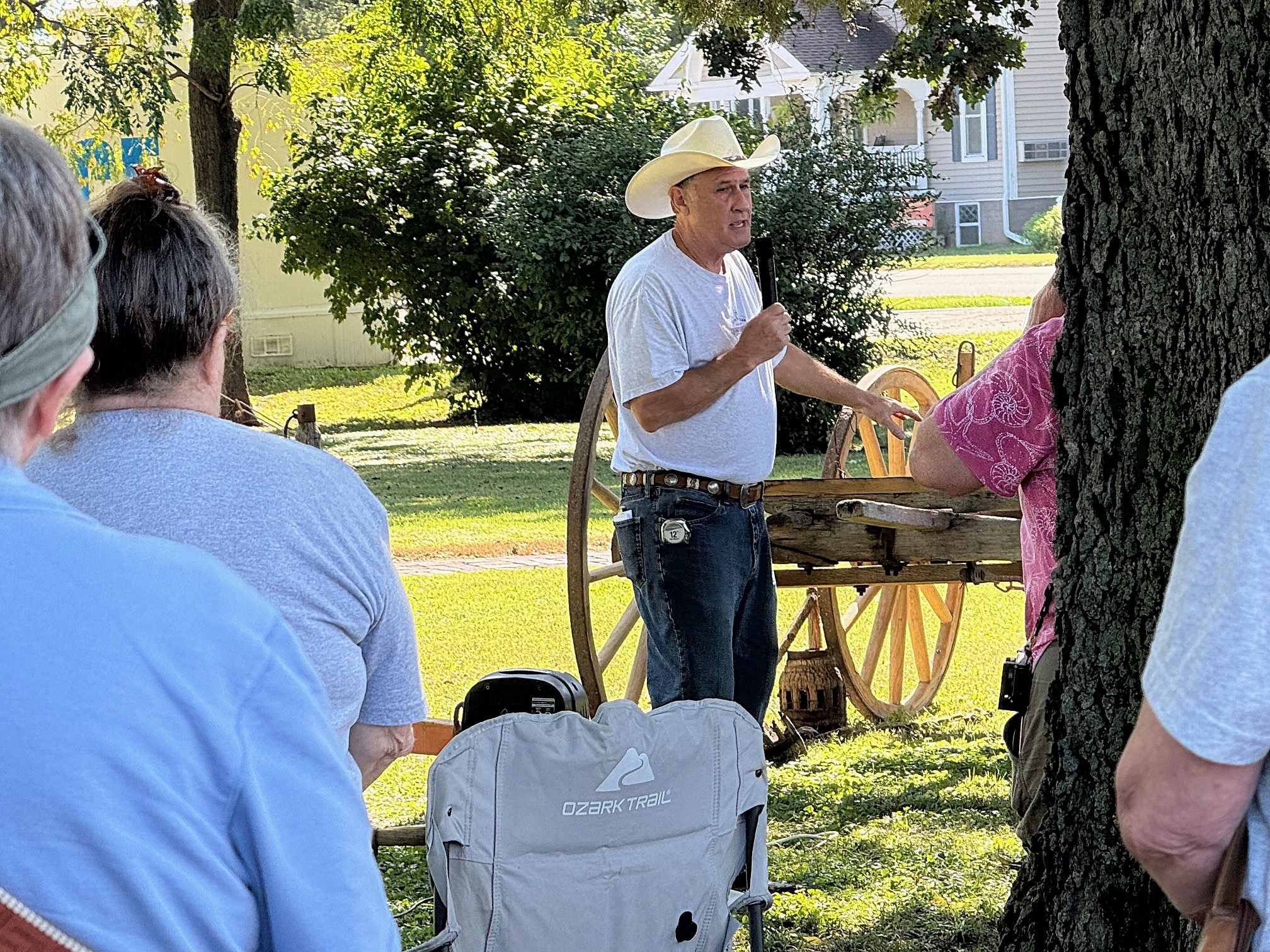
If you or your group have questions about a specific vehicle or the topic of wagons or stages in general, we'd love to hear from you. Likewise, if you haven't signed up to be notified each time we post a new Article or Blog, it's easy. Just click on the SIGN-UP link in the upper right of our website and leave your email address. We'll take care of the rest.
Have a great week!
David
Psalm 20:7